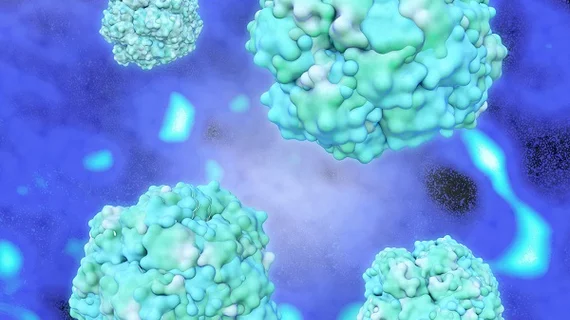Incorporating the golden-angle radial sparse parallel (GRASP) technique into dynamic contrast agent-enhanced (DCE) MRI improves the performance of prostate MRI, according to a Jan. 1 study published in Radiology.
David J. Winkel with University Hospital of Basel in Basel, Switzerland and colleagues examined 94 male patients with suspicion of prostate cancer using 3.0 T MRI. All MRIs were paired with diffusion weighting and DCE with either temporal resolution of 2.5 seconds (GRASP) or temporal resolution at 10 seconds (VIBE). The team included 101 lesions in their research.
After comparison, Winkel et al. found the GRASP technique achieved a higher diagnostic performance than using only diffusion characteristics. GRASP scored an area under the curve of 0.97 compared to 0.93 in diffusion only. Additionally, apparent diffusion coefficient (ADC) with perfusion parameters taken with VIBE “had no additional benefit,” the authors wrote.
“We demonstrated that if used in a dual-parameter model by incorporating diffusion and perfusion characteristics, the GRASP acquisition technique significantly improved the diagnostic performance of multiparametric MR examinations of the prostate,” the authors wrote.
One recent study demonstrated that improved temporal resolution without an increase in spatial resolution did not increase diagnostic performance. This may be, the authors wrote, due to the “especially heterogeneous tumor biology” seen in prostate cancer lesions, which is why Winkel et al. increased both resolutions simultaneously.

